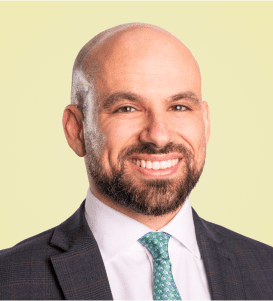Searching for IDs:
Array
(
[0] => 1192
[1] => 1190
[2] => 1194
[3] => 1191
[4] => 1189
[5] => 4630
[6] => 4369
[7] => 2684
[8] => 1248
[9] => 1247
[10] => 1188
[11] => 1223
[12] => 1231
[13] => 1232
[14] => 1172
[15] => 1178
[16] => 5296
[17] => 4225
[18] => 3359
[19] => 2834
[20] => 1249
)
Query args:
Array
(
[post_type] => teams
[posts_per_page] => -1
[post_status] => publish
[post__in] => Array
(
[0] => 1192
[1] => 1190
[2] => 1194
[3] => 1191
[4] => 1189
[5] => 4630
[6] => 4369
[7] => 2684
[8] => 1248
[9] => 1247
[10] => 1188
[11] => 1223
[12] => 1231
[13] => 1232
[14] => 1172
[15] => 1178
[16] => 5296
[17] => 4225
[18] => 3359
[19] => 2834
[20] => 1249
)
[orderby] => post__in
)
Found team members:
Array
(
[0] => WP_Post Object
(
[ID] => 1192
[post_author] => 9
[post_date] => 2024-01-31 11:09:46
[post_date_gmt] => 2024-01-31 11:09:46
[post_content] =>
[post_title] => Robbie MacDonald
[post_excerpt] =>
[post_status] => publish
[comment_status] => closed
[ping_status] => closed
[post_password] =>
[post_name] => robbie-macdonald
[to_ping] =>
[pinged] =>
[post_modified] => 2024-08-06 16:20:38
[post_modified_gmt] => 2024-08-06 15:20:38
[post_content_filtered] =>
[post_parent] => 0
[guid] => https://iquw.878dev.co.uk/?post_type=teams&p=1192
[menu_order] => 0
[post_type] => teams
[post_mime_type] =>
[comment_count] => 0
[filter] => raw
)
[1] => WP_Post Object
(
[ID] => 1190
[post_author] => 9
[post_date] => 2024-01-31 11:08:31
[post_date_gmt] => 2024-01-31 11:08:31
[post_content] =>
[post_title] => John Brown
[post_excerpt] =>
[post_status] => publish
[comment_status] => closed
[ping_status] => closed
[post_password] =>
[post_name] => john-brown
[to_ping] =>
[pinged] =>
[post_modified] => 2024-08-06 16:20:48
[post_modified_gmt] => 2024-08-06 15:20:48
[post_content_filtered] =>
[post_parent] => 0
[guid] => https://iquw.878dev.co.uk/?post_type=teams&p=1190
[menu_order] => 0
[post_type] => teams
[post_mime_type] =>
[comment_count] => 0
[filter] => raw
)
[2] => WP_Post Object
(
[ID] => 1194
[post_author] => 10
[post_date] => 2024-01-31 11:11:16
[post_date_gmt] => 2024-01-31 11:11:16
[post_content] =>
[post_title] => Charles Tinworth
[post_excerpt] =>
[post_status] => publish
[comment_status] => closed
[ping_status] => closed
[post_password] =>
[post_name] => charles-tinworth
[to_ping] =>
[pinged] =>
[post_modified] => 2024-08-27 14:53:14
[post_modified_gmt] => 2024-08-27 13:53:14
[post_content_filtered] =>
[post_parent] => 0
[guid] => https://iquw.878dev.co.uk/?post_type=teams&p=1194
[menu_order] => 0
[post_type] => teams
[post_mime_type] =>
[comment_count] => 0
[filter] => raw
)
[3] => WP_Post Object
(
[ID] => 1191
[post_author] => 10
[post_date] => 2024-01-31 11:09:06
[post_date_gmt] => 2024-01-31 11:09:06
[post_content] =>
[post_title] => Liam Wood
[post_excerpt] =>
[post_status] => publish
[comment_status] => closed
[ping_status] => closed
[post_password] =>
[post_name] => liam-wood
[to_ping] =>
[pinged] =>
[post_modified] => 2024-08-20 15:10:29
[post_modified_gmt] => 2024-08-20 14:10:29
[post_content_filtered] =>
[post_parent] => 0
[guid] => https://iquw.878dev.co.uk/?post_type=teams&p=1191
[menu_order] => 0
[post_type] => teams
[post_mime_type] =>
[comment_count] => 0
[filter] => raw
)
[4] => WP_Post Object
(
[ID] => 1189
[post_author] => 9
[post_date] => 2024-01-31 11:07:36
[post_date_gmt] => 2024-01-31 11:07:36
[post_content] =>
[post_title] => Stuart Bell
[post_excerpt] =>
[post_status] => publish
[comment_status] => closed
[ping_status] => closed
[post_password] =>
[post_name] => stuart-bell
[to_ping] =>
[pinged] =>
[post_modified] => 2025-01-22 10:08:18
[post_modified_gmt] => 2025-01-22 10:08:18
[post_content_filtered] =>
[post_parent] => 0
[guid] => https://iquw.878dev.co.uk/?post_type=teams&p=1189
[menu_order] => 0
[post_type] => teams
[post_mime_type] =>
[comment_count] => 0
[filter] => raw
)
[5] => WP_Post Object
(
[ID] => 4630
[post_author] => 10
[post_date] => 2025-01-06 12:50:32
[post_date_gmt] => 2025-01-06 12:50:32
[post_content] =>
[post_title] => Alice Cracknell
[post_excerpt] =>
[post_status] => publish
[comment_status] => closed
[ping_status] => closed
[post_password] =>
[post_name] => alice-cracknell
[to_ping] =>
[pinged] =>
[post_modified] => 2025-02-10 11:44:41
[post_modified_gmt] => 2025-02-10 11:44:41
[post_content_filtered] =>
[post_parent] => 0
[guid] => https://iquw.878dev.co.uk/?post_type=teams&p=4630
[menu_order] => 0
[post_type] => teams
[post_mime_type] =>
[comment_count] => 0
[filter] => raw
)
[6] => WP_Post Object
(
[ID] => 4369
[post_author] => 8
[post_date] => 2024-10-29 12:26:51
[post_date_gmt] => 2024-10-29 12:26:51
[post_content] =>
[post_title] => Ryan Butcher
[post_excerpt] =>
[post_status] => publish
[comment_status] => closed
[ping_status] => closed
[post_password] =>
[post_name] => ryan-butcher
[to_ping] =>
[pinged] =>
[post_modified] => 2025-01-10 16:31:57
[post_modified_gmt] => 2025-01-10 16:31:57
[post_content_filtered] =>
[post_parent] => 0
[guid] => https://iquw.878dev.co.uk/?post_type=teams&p=4369
[menu_order] => 0
[post_type] => teams
[post_mime_type] =>
[comment_count] => 0
[filter] => raw
)
[7] => WP_Post Object
(
[ID] => 2684
[post_author] => 9
[post_date] => 2024-03-15 19:27:39
[post_date_gmt] => 2024-03-15 19:27:39
[post_content] =>
[post_title] => Mike Barrett
[post_excerpt] =>
[post_status] => publish
[comment_status] => closed
[ping_status] => closed
[post_password] =>
[post_name] => mike-barrett
[to_ping] =>
[pinged] =>
[post_modified] => 2024-08-08 16:27:47
[post_modified_gmt] => 2024-08-08 15:27:47
[post_content_filtered] =>
[post_parent] => 0
[guid] => https://iquw.878dev.co.uk/?post_type=teams&p=2684
[menu_order] => 0
[post_type] => teams
[post_mime_type] =>
[comment_count] => 0
[filter] => raw
)
[8] => WP_Post Object
(
[ID] => 1248
[post_author] => 9
[post_date] => 2024-01-31 14:28:18
[post_date_gmt] => 2024-01-31 14:28:18
[post_content] =>
[post_title] => Rachel Stiff
[post_excerpt] =>
[post_status] => publish
[comment_status] => closed
[ping_status] => closed
[post_password] =>
[post_name] => rachel-stiff
[to_ping] =>
[pinged] =>
[post_modified] => 2024-08-06 16:13:20
[post_modified_gmt] => 2024-08-06 15:13:20
[post_content_filtered] =>
[post_parent] => 0
[guid] => https://iquw.878dev.co.uk/?post_type=teams&p=1248
[menu_order] => 0
[post_type] => teams
[post_mime_type] =>
[comment_count] => 0
[filter] => raw
)
[9] => WP_Post Object
(
[ID] => 1247
[post_author] => 10
[post_date] => 2024-01-31 14:27:01
[post_date_gmt] => 2024-01-31 14:27:01
[post_content] =>
[post_title] => Oliver Colegate
[post_excerpt] =>
[post_status] => publish
[comment_status] => closed
[ping_status] => closed
[post_password] =>
[post_name] => oliver-colegate
[to_ping] =>
[pinged] =>
[post_modified] => 2024-08-27 15:01:37
[post_modified_gmt] => 2024-08-27 14:01:37
[post_content_filtered] =>
[post_parent] => 0
[guid] => https://iquw.878dev.co.uk/?post_type=teams&p=1247
[menu_order] => 0
[post_type] => teams
[post_mime_type] =>
[comment_count] => 0
[filter] => raw
)
[10] => WP_Post Object
(
[ID] => 1188
[post_author] => 8
[post_date] => 2024-01-31 11:06:23
[post_date_gmt] => 2024-01-31 11:06:23
[post_content] =>
[post_title] => Peter Collop
[post_excerpt] =>
[post_status] => publish
[comment_status] => closed
[ping_status] => closed
[post_password] =>
[post_name] => peter-collop
[to_ping] =>
[pinged] =>
[post_modified] => 2025-01-10 16:28:00
[post_modified_gmt] => 2025-01-10 16:28:00
[post_content_filtered] =>
[post_parent] => 0
[guid] => https://iquw.878dev.co.uk/?post_type=teams&p=1188
[menu_order] => 0
[post_type] => teams
[post_mime_type] =>
[comment_count] => 0
[filter] => raw
)
[11] => WP_Post Object
(
[ID] => 1223
[post_author] => 9
[post_date] => 2024-01-31 12:28:36
[post_date_gmt] => 2024-01-31 12:28:36
[post_content] =>
[post_title] => Dan Callow
[post_excerpt] =>
[post_status] => publish
[comment_status] => closed
[ping_status] => closed
[post_password] =>
[post_name] => dan-callow
[to_ping] =>
[pinged] =>
[post_modified] => 2024-08-06 16:17:06
[post_modified_gmt] => 2024-08-06 15:17:06
[post_content_filtered] =>
[post_parent] => 0
[guid] => https://iquw.878dev.co.uk/?post_type=teams&p=1223
[menu_order] => 0
[post_type] => teams
[post_mime_type] =>
[comment_count] => 0
[filter] => raw
)
[12] => WP_Post Object
(
[ID] => 1231
[post_author] => 9
[post_date] => 2024-01-31 14:03:28
[post_date_gmt] => 2024-01-31 14:03:28
[post_content] =>
[post_title] => George Green
[post_excerpt] =>
[post_status] => publish
[comment_status] => closed
[ping_status] => closed
[post_password] =>
[post_name] => george-green
[to_ping] =>
[pinged] =>
[post_modified] => 2024-08-06 16:15:32
[post_modified_gmt] => 2024-08-06 15:15:32
[post_content_filtered] =>
[post_parent] => 0
[guid] => https://iquw.878dev.co.uk/?post_type=teams&p=1231
[menu_order] => 0
[post_type] => teams
[post_mime_type] =>
[comment_count] => 0
[filter] => raw
)
[13] => WP_Post Object
(
[ID] => 1232
[post_author] => 9
[post_date] => 2024-01-31 14:04:05
[post_date_gmt] => 2024-01-31 14:04:05
[post_content] =>
[post_title] => Oliver Savill
[post_excerpt] =>
[post_status] => publish
[comment_status] => closed
[ping_status] => closed
[post_password] =>
[post_name] => oliver-savill
[to_ping] =>
[pinged] =>
[post_modified] => 2024-08-06 16:15:24
[post_modified_gmt] => 2024-08-06 15:15:24
[post_content_filtered] =>
[post_parent] => 0
[guid] => https://iquw.878dev.co.uk/?post_type=teams&p=1232
[menu_order] => 0
[post_type] => teams
[post_mime_type] =>
[comment_count] => 0
[filter] => raw
)
[14] => WP_Post Object
(
[ID] => 1172
[post_author] => 9
[post_date] => 2024-01-31 10:33:14
[post_date_gmt] => 2024-01-31 10:33:14
[post_content] =>
[post_title] => Gavin Williams
[post_excerpt] =>
[post_status] => publish
[comment_status] => closed
[ping_status] => closed
[post_password] =>
[post_name] => gavin-williams
[to_ping] =>
[pinged] =>
[post_modified] => 2025-01-22 10:12:14
[post_modified_gmt] => 2025-01-22 10:12:14
[post_content_filtered] =>
[post_parent] => 0
[guid] => https://iquw.878dev.co.uk/?post_type=teams&p=1172
[menu_order] => 0
[post_type] => teams
[post_mime_type] =>
[comment_count] => 0
[filter] => raw
)
[15] => WP_Post Object
(
[ID] => 1178
[post_author] => 10
[post_date] => 2024-01-31 11:13:00
[post_date_gmt] => 2024-01-31 11:13:00
[post_content] =>
[post_title] => Tony Kriesel
[post_excerpt] =>
[post_status] => publish
[comment_status] => closed
[ping_status] => closed
[post_password] =>
[post_name] => tony-kriesel
[to_ping] =>
[pinged] =>
[post_modified] => 2024-07-24 13:24:06
[post_modified_gmt] => 2024-07-24 12:24:06
[post_content_filtered] =>
[post_parent] => 0
[guid] => https://iquw.878dev.co.uk/?post_type=teams&p=1178
[menu_order] => 0
[post_type] => teams
[post_mime_type] =>
[comment_count] => 0
[filter] => raw
)
[16] => WP_Post Object
(
[ID] => 5296
[post_author] => 10
[post_date] => 2025-03-03 14:37:26
[post_date_gmt] => 2025-03-03 14:37:26
[post_content] =>
[post_title] => Matt Norman
[post_excerpt] =>
[post_status] => publish
[comment_status] => closed
[ping_status] => closed
[post_password] =>
[post_name] => matt-norman
[to_ping] =>
[pinged] =>
[post_modified] => 2025-03-07 11:58:41
[post_modified_gmt] => 2025-03-07 11:58:41
[post_content_filtered] =>
[post_parent] => 0
[guid] => https://iquw.878dev.co.uk/?post_type=teams&p=5296
[menu_order] => 0
[post_type] => teams
[post_mime_type] =>
[comment_count] => 0
[filter] => raw
)
[17] => WP_Post Object
(
[ID] => 4225
[post_author] => 9
[post_date] => 2024-10-03 16:07:48
[post_date_gmt] => 2024-10-03 15:07:48
[post_content] =>
[post_title] => Lottie Humphries
[post_excerpt] =>
[post_status] => publish
[comment_status] => closed
[ping_status] => closed
[post_password] =>
[post_name] => lottie-humphries
[to_ping] =>
[pinged] =>
[post_modified] => 2024-10-03 16:07:50
[post_modified_gmt] => 2024-10-03 15:07:50
[post_content_filtered] =>
[post_parent] => 0
[guid] => https://iquw.878dev.co.uk/?post_type=teams&p=4225
[menu_order] => 0
[post_type] => teams
[post_mime_type] =>
[comment_count] => 0
[filter] => raw
)
[18] => WP_Post Object
(
[ID] => 3359
[post_author] => 11
[post_date] => 2024-05-22 17:26:11
[post_date_gmt] => 2024-05-22 16:26:11
[post_content] =>
[post_title] => Vanessa Elliot
[post_excerpt] =>
[post_status] => publish
[comment_status] => closed
[ping_status] => closed
[post_password] =>
[post_name] => vanessa-elliot
[to_ping] =>
[pinged] =>
[post_modified] => 2024-08-06 10:58:05
[post_modified_gmt] => 2024-08-06 09:58:05
[post_content_filtered] =>
[post_parent] => 0
[guid] => https://iquw.878dev.co.uk/?post_type=teams&p=3359
[menu_order] => 0
[post_type] => teams
[post_mime_type] =>
[comment_count] => 0
[filter] => raw
)
[19] => WP_Post Object
(
[ID] => 2834
[post_author] => 9
[post_date] => 2024-03-26 13:53:59
[post_date_gmt] => 2024-03-26 13:53:59
[post_content] =>
[post_title] => Kate Hughes
[post_excerpt] =>
[post_status] => publish
[comment_status] => closed
[ping_status] => closed
[post_password] =>
[post_name] => kate-hughes
[to_ping] =>
[pinged] =>
[post_modified] => 2024-10-03 16:01:37
[post_modified_gmt] => 2024-10-03 15:01:37
[post_content_filtered] =>
[post_parent] => 0
[guid] => https://iquw.878dev.co.uk/?post_type=teams&p=2834
[menu_order] => 0
[post_type] => teams
[post_mime_type] =>
[comment_count] => 0
[filter] => raw
)
[20] => WP_Post Object
(
[ID] => 1249
[post_author] => 10
[post_date] => 2024-01-31 14:28:52
[post_date_gmt] => 2024-01-31 14:28:52
[post_content] =>
[post_title] => Tom Beagley
[post_excerpt] =>
[post_status] => publish
[comment_status] => closed
[ping_status] => closed
[post_password] =>
[post_name] => tom-beagley
[to_ping] =>
[pinged] =>
[post_modified] => 2024-08-13 17:02:34
[post_modified_gmt] => 2024-08-13 16:02:34
[post_content_filtered] =>
[post_parent] => 0
[guid] => https://iquw.878dev.co.uk/?post_type=teams&p=1249
[menu_order] => 0
[post_type] => teams
[post_mime_type] =>
[comment_count] => 0
[filter] => raw
)
)
ACF Fields for Robbie MacDonald (ID: 1192):
hide_on_head_slider value: Array
(
[0] => Yes
)
small_avatar value: https://iquw.878dev.co.uk/wp-content/uploads/2024/01/NEW-SITE-MACDONALD.jpg
specialism value: Array
(
[0] => Array
(
[image] =>
[sub-text] =>
[product] => 813
)
)
desctiption value: Head of Property
ACF Fields for John Brown (ID: 1190):
hide_on_head_slider value: Array
(
[0] => Yes
)
small_avatar value: https://iquw.878dev.co.uk/wp-content/uploads/2024/01/NEW-SITE-BROWN.jpg
specialism value: Array
(
[0] => Array
(
[image] =>
[sub-text] =>
[product] => 813
)
)
desctiption value: Lead Underwriter, Direct & Facultative Property
ACF Fields for Charles Tinworth (ID: 1194):
hide_on_head_slider value: Array
(
[0] => Yes
)
small_avatar value: https://iquw.878dev.co.uk/wp-content/uploads/2024/01/YELLOW-CHARLES-TINWORTH.png
specialism value: Array
(
[0] => Array
(
[image] =>
[sub-text] =>
[product] => 813
)
)
desctiption value: Senior Underwriter, Direct & Facultative Property
ACF Fields for Liam Wood (ID: 1191):
hide_on_head_slider value: Array
(
[0] => Yes
)
small_avatar value: https://iquw.878dev.co.uk/wp-content/uploads/2024/01/LIAM-WOOD-YELLOW-WEB-24.jpg
specialism value: Array
(
[0] => Array
(
[image] =>
[sub-text] =>
[product] => 813
)
)
desctiption value: Underwriter, Direct & Facultative Property
ACF Fields for Stuart Bell (ID: 1189):
hide_on_head_slider value: Array
(
[0] => Yes
)
small_avatar value: https://iquw.878dev.co.uk/wp-content/uploads/2024/01/NEW-SITE-BELL.jpg
specialism value: Array
(
[0] => Array
(
[image] =>
[sub-text] =>
[product] => 810
)
[1] => Array
(
[image] =>
[sub-text] =>
[product] => 813
)
[2] => Array
(
[image] =>
[sub-text] =>
[product] => 839
)
[3] => Array
(
[image] =>
[sub-text] =>
[product] => 835
)
[4] => Array
(
[image] =>
[sub-text] =>
[product] => 842
)
[5] => Array
(
[image] =>
[sub-text] =>
[product] => 4753
)
)
desctiption value: Head of Property & Reinsurance Claims
ACF Fields for Alice Cracknell (ID: 4630):
hide_on_head_slider value: Array
(
)
small_avatar value: https://iquw.878dev.co.uk/wp-content/uploads/2025/01/ALICE-CRACKNELL-YELLOW-WEB-25.jpg
specialism value: Array
(
[0] => Array
(
[image] =>
[sub-text] =>
[product] => 813
)
)
desctiption value: Underwriter, Direct & Facultative Property
ACF Fields for Ryan Butcher (ID: 4369):
hide_on_head_slider value: Array
(
[0] => Yes
)
small_avatar value: https://iquw.878dev.co.uk/wp-content/uploads/2025/01/RYAN-BUTCHER-YELLOW-WEB-25.jpg
specialism value: Array
(
[0] => Array
(
[image] =>
[sub-text] =>
[product] => 810
)
[1] => Array
(
[image] =>
[sub-text] =>
[product] => 813
)
)
desctiption value: Senior Claims Handler, Property and Reinsurance
ACF Fields for Mike Barrett (ID: 2684):
hide_on_head_slider value: Array
(
[0] => Yes
)
small_avatar value: https://iquw.878dev.co.uk/wp-content/uploads/2024/01/YELLOW-MIKE-BARRETT.png
specialism value: Array
(
[0] => Array
(
[image] =>
[sub-text] =>
[product] => 813
)
[1] => Array
(
[image] =>
[sub-text] =>
[product] => 813
)
)
desctiption value: Lead Underwriter, Direct & Facultative Property
ACF Fields for Rachel Stiff (ID: 1248):
hide_on_head_slider value: Array
(
[0] => Yes
)
small_avatar value: https://iquw.878dev.co.uk/wp-content/uploads/2024/01/RACHEL-STIFF-YELLOW-WEB.jpg
specialism value: Array
(
[0] => Array
(
[image] =>
[sub-text] =>
[product] => 813
)
)
desctiption value: Assistant Underwriter, Property
ACF Fields for Oliver Colegate (ID: 1247):
hide_on_head_slider value: Array
(
[0] => Yes
)
small_avatar value: https://iquw.878dev.co.uk/wp-content/uploads/2024/01/YELLOW-OLIVER-COLEGATE.png
specialism value: Array
(
[0] => Array
(
[image] =>
[sub-text] =>
[product] => 813
)
)
desctiption value: Underwriting Assistant, Direct & Facultative Property
ACF Fields for Peter Collop (ID: 1188):
hide_on_head_slider value: Array
(
[0] => Yes
)
small_avatar value: https://iquw.878dev.co.uk/wp-content/uploads/2024/01/NEW-SITE-COLLOP.jpg
specialism value: Array
(
[0] => Array
(
[image] =>
[sub-text] =>
[product] => 810
)
[1] => Array
(
[image] =>
[sub-text] =>
[product] => 813
)
)
desctiption value: Senior Claims Handler, Property and Reinsurance
ACF Fields for Dan Callow (ID: 1223):
hide_on_head_slider value: Array
(
[0] => Yes
)
small_avatar value: https://iquw.878dev.co.uk/wp-content/uploads/2024/01/NEW-SITE-CALLOW.jpg
specialism value: Array
(
[0] => Array
(
[image] =>
[sub-text] =>
[product] => 827
)
[1] => Array
(
[image] =>
[sub-text] =>
[product] => 822
)
)
desctiption value: Lead Underwriter, Political Violence & Terrorism, War
ACF Fields for George Green (ID: 1231):
hide_on_head_slider value: Array
(
[0] => Yes
)
small_avatar value: https://iquw.878dev.co.uk/wp-content/uploads/2024/01/NEW-SITE-GREEN.jpg
specialism value: Array
(
[0] => Array
(
[image] =>
[sub-text] =>
[product] => 827
)
[1] => Array
(
[image] =>
[sub-text] =>
[product] => 822
)
)
desctiption value: Senior Underwriter, Political Violence & Terrorism
ACF Fields for Oliver Savill (ID: 1232):
hide_on_head_slider value: Array
(
[0] => Yes
)
small_avatar value: https://iquw.878dev.co.uk/wp-content/uploads/2024/01/NEW-SITE-SAVILL.jpg
specialism value: Array
(
[0] => Array
(
[image] =>
[sub-text] =>
[product] => 827
)
[1] => Array
(
[image] =>
[sub-text] =>
[product] => 822
)
)
desctiption value: Assistant Underwriter, Political Violence and Terrorism
ACF Fields for Gavin Williams (ID: 1172):
hide_on_head_slider value: Array
(
[0] => Yes
)
small_avatar value: https://iquw.878dev.co.uk/wp-content/uploads/2024/01/YELLOW-GAVIN-WILLIAMS.png
specialism value: Array
(
[0] => Array
(
[image] =>
[sub-text] =>
[product] => 402
)
[1] => Array
(
[image] =>
[sub-text] =>
[product] => 846
)
[2] => Array
(
[image] =>
[sub-text] =>
[product] => 757
)
[3] => Array
(
[image] =>
[sub-text] =>
[product] => 749
)
[4] => Array
(
[image] =>
[sub-text] =>
[product] => 827
)
[5] => Array
(
[image] =>
[sub-text] =>
[product] => 822
)
[6] => Array
(
[image] =>
[sub-text] =>
[product] => 744
)
[7] => Array
(
[image] =>
[sub-text] =>
[product] => 4753
)
)
desctiption value: Head of Claims
ACF Fields for Tony Kriesel (ID: 1178):
hide_on_head_slider value: Array
(
)
small_avatar value: https://iquw.878dev.co.uk/wp-content/uploads/2024/01/NEW-SITE-KRISELL.jpg
specialism value: Array
(
[0] => Array
(
[image] =>
[sub-text] =>
[product] => 846
)
[1] => Array
(
[image] =>
[sub-text] =>
[product] => 405
)
[2] => Array
(
[image] =>
[sub-text] =>
[product] => 408
)
[3] => Array
(
[image] =>
[sub-text] =>
[product] => 816
)
[4] => Array
(
[image] =>
[sub-text] =>
[product] => 754
)
[5] => Array
(
[image] =>
[sub-text] =>
[product] => 827
)
[6] => Array
(
[image] =>
[sub-text] =>
[product] => 822
)
)
desctiption value: Head of Professional Lines and Specialty Claims
ACF Fields for Matt Norman (ID: 5296):
hide_on_head_slider value: Array
(
[0] => Yes
)
small_avatar value: https://iquw.878dev.co.uk/wp-content/uploads/2024/01/Rectangle-2271-7.png
specialism value: Array
(
[0] => Array
(
[image] =>
[sub-text] =>
[product] => 822
)
[1] => Array
(
[image] =>
[sub-text] =>
[product] => 827
)
)
desctiption value: Underwriter
ACF Fields for Lottie Humphries (ID: 4225):
hide_on_head_slider value: Array
(
[0] => Yes
)
small_avatar value: https://iquw.878dev.co.uk/wp-content/uploads/2024/07/LOTTIE-HUMPHRIES-YELLOW-WEB-24.jpg
specialism value: Array
(
[0] => Array
(
[image] =>
[sub-text] =>
[product] => 827
)
[1] => Array
(
[image] =>
[sub-text] =>
[product] => 822
)
)
desctiption value: Technical Assistant, Political Violence & Terrorism, War
ACF Fields for Vanessa Elliot (ID: 3359):
hide_on_head_slider value: Array
(
[0] => Yes
)
small_avatar value: https://iquw.878dev.co.uk/wp-content/uploads/2024/01/YELLOW-VANESSA-ELLIOT.png
specialism value: Array
(
[0] => Array
(
[image] =>
[sub-text] =>
[product] => 846
)
[1] => Array
(
[image] =>
[sub-text] =>
[product] => 405
)
[2] => Array
(
[image] =>
[sub-text] =>
[product] => 408
)
[3] => Array
(
[image] =>
[sub-text] =>
[product] => 816
)
[4] => Array
(
[image] =>
[sub-text] =>
[product] => 754
)
[5] => Array
(
[image] =>
[sub-text] =>
[product] => 827
)
[6] => Array
(
[image] =>
[sub-text] =>
[product] => 822
)
)
desctiption value: Claims Handler, Specialty
ACF Fields for Kate Hughes (ID: 2834):
hide_on_head_slider value: Array
(
[0] => Yes
)
small_avatar value: https://iquw.878dev.co.uk/wp-content/uploads/2024/07/KATE-HUGHES-YELLOW-WEB-24.jpg
specialism value: Array
(
[0] => Array
(
[image] =>
[sub-text] =>
[product] => 827
)
[1] => Array
(
[image] =>
[sub-text] =>
[product] => 822
)
)
desctiption value: Underwriter, Political Violence & Terrorism, War
ACF Fields for Tom Beagley (ID: 1249):
hide_on_head_slider value: Array
(
)
small_avatar value: https://iquw.878dev.co.uk/wp-content/uploads/2024/01/NEW-SITE-BEAGLEY.jpg
specialism value: Array
(
[0] => Array
(
[image] =>
[sub-text] =>
[product] => 827
)
[1] => Array
(
[image] =>
[sub-text] =>
[product] => 822
)
)
desctiption value: Underwriting Analyst, Political Violence & Terrorism, War
Hide value for Robbie MacDonald: Array
(
[0] => Yes
)
Robbie MacDonald
Direct & Facultative Property
Head of Property
Hide value for John Brown: Array
(
[0] => Yes
)
John Brown
Direct & Facultative Property
Lead Underwriter, Direct & Facultative Property
Hide value for Charles Tinworth: Array
(
[0] => Yes
)
Charles Tinworth
Direct & Facultative Property
Senior Underwriter, Direct & Facultative Property
Hide value for Liam Wood: Array
(
[0] => Yes
)
Liam Wood
Direct & Facultative Property
Underwriter, Direct & Facultative Property
Hide value for Stuart Bell: Array
(
[0] => Yes
)
Stuart Bell
Delegated Authority Property, Direct & Facultative Property, Property Treaty – International, Property Treaty – US, Specialty Reinsurance, Portfolio Solutions
Head of Property & Reinsurance Claims
Hide value for Alice Cracknell: Array
(
)
Alice Cracknell
Direct & Facultative Property
Underwriter, Direct & Facultative Property
Hide value for Ryan Butcher: Array
(
[0] => Yes
)
Ryan Butcher
Delegated Authority Property, Direct & Facultative Property
Senior Claims Handler, Property and Reinsurance
Hide value for Mike Barrett: Array
(
[0] => Yes
)
Mike Barrett
Direct & Facultative Property, Direct & Facultative Property
Lead Underwriter, Direct & Facultative Property
Hide value for Rachel Stiff: Array
(
[0] => Yes
)
Rachel Stiff
Direct & Facultative Property
Assistant Underwriter, Property
Hide value for Oliver Colegate: Array
(
[0] => Yes
)
Oliver Colegate
Direct & Facultative Property
Underwriting Assistant, Direct & Facultative Property
Hide value for Peter Collop: Array
(
[0] => Yes
)
Peter Collop
Delegated Authority Property, Direct & Facultative Property
Senior Claims Handler, Property and Reinsurance
Hide value for Dan Callow: Array
(
[0] => Yes
)
Dan Callow
Political Violence & Terrorism, War
Lead Underwriter, Political Violence & Terrorism, War
Hide value for George Green: Array
(
[0] => Yes
)
George Green
Political Violence & Terrorism, War
Senior Underwriter, Political Violence & Terrorism
Hide value for Oliver Savill: Array
(
[0] => Yes
)
Oliver Savill
Political Violence & Terrorism, War
Assistant Underwriter, Political Violence and Terrorism
Hide value for Gavin Williams: Array
(
[0] => Yes
)
Gavin Williams
Cargo, Crisis Management, Energy, Marine & Energy Liability, Political Violence & Terrorism, War, Aviation, Portfolio Solutions
Head of Claims
Hide value for Tony Kriesel: Array
(
)
Tony Kriesel
Crisis Management, Cyber, Directors & Officers, Financial Institutions, Credit & Political Risk, Political Violence & Terrorism, War
Head of Professional Lines and Specialty Claims
Hide value for Matt Norman: Array
(
[0] => Yes
)
Matt Norman
War, Political Violence & Terrorism
Underwriter
Hide value for Lottie Humphries: Array
(
[0] => Yes
)
Lottie Humphries
Political Violence & Terrorism, War
Technical Assistant, Political Violence & Terrorism, War
Hide value for Vanessa Elliot: Array
(
[0] => Yes
)
Vanessa Elliot
Crisis Management, Cyber, Directors & Officers, Financial Institutions, Credit & Political Risk, Political Violence & Terrorism, War
Claims Handler, Specialty
Hide value for Kate Hughes: Array
(
[0] => Yes
)
Kate Hughes
Political Violence & Terrorism, War
Underwriter, Political Violence & Terrorism, War
Hide value for Tom Beagley: Array
(
)
Tom Beagley
Political Violence & Terrorism, War
Underwriting Analyst, Political Violence & Terrorism, War


























